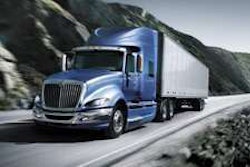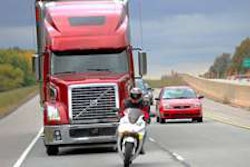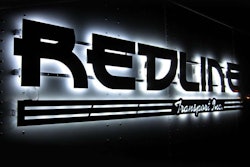Volvo has said its EPA 2010 diesel engines achieved a 5 percent increase in overall fuel economy compared to its 2007 engine family due to use of selective catalytic reduction emissions technology. Now, Ron Huibers, senior vice president of sales and marketing for Volvo Trucks North America, said the company is going a step further, using new, aerodynamic features and powertrain enhancements to boost Volvo VN fuel economy another 3 percent for an overall gain of 8 percent compared with 2007 Volvo diesel engines.
“This is the next logical step forward for Volvo,” Huibers said March 31 at a truck show in Louisville, Ky. “Environmental responsibility has long been a core value for Volvo. We are not cutting corners -or using credits – to meet EPA 2010 emissions regulations. And our SCR solution has us well-situated to meet upcoming CO2 regulations, which happen to go hand-in-hand with increasing fuel economy for our customers.”
“We’ve always been focused on fuel economy and aerodynamics are an important part of that solution,” said Frank Bio, product manager at VTNA.
Bio said Volvo engineers used computational fluid dynamics programs as well as full- and half-scale wind tunnel tests to analyze around, over and under a VN tractor. So while a driver may not recognize changes to a VN’s newly integrated roof fairing-sunvisor design, bumper, bug screen or rearview mirrors, many small changes in the front wheel well and other areas underneath the truck are managing airflow more effectively.
Powertrain product manager Ed Saxman said new VN powertrain options also play a key role in raising Volvo fuel economy ratings with the release of a a new 455 hp and 1,550/1,750 lb.-ft. torque rating for the Volvo D13 engine. The new rating complements Volvo Trucks’ existing Eco-Torque and Dual-Torque ratings of 405, 425, 475, and 500 hp, designed to maximize fuel economy by providing a driver-intuitive, easy-to-use algorithm that rewards fuel-efficient driving and encourages low-rpm engine operation.
“Eco-Torque and Dual Torque ratings take advantage of high-torque-rise engine curves and take effect in the top two gears, where drivers in line-haul operations spend as much as 95 percent of their driving time,” Saxman said. “On-demand, engine torque will increase by 200 lb.-ft. – even 300 lb.-ft. in the case of the 425 hp engine – to allow the vehicle to remain in top gear on most grades.”
Volvo Trucks also offers the Eco-Torque ratings on both its D11 and D16 engines.
Saxman said customers can also achieve fuel savings through Volvo’s new Mass Based Variable Torque software that senses the gross combination weight of the truck and adjusts the engine’s torque when the truck is lightly loaded.










